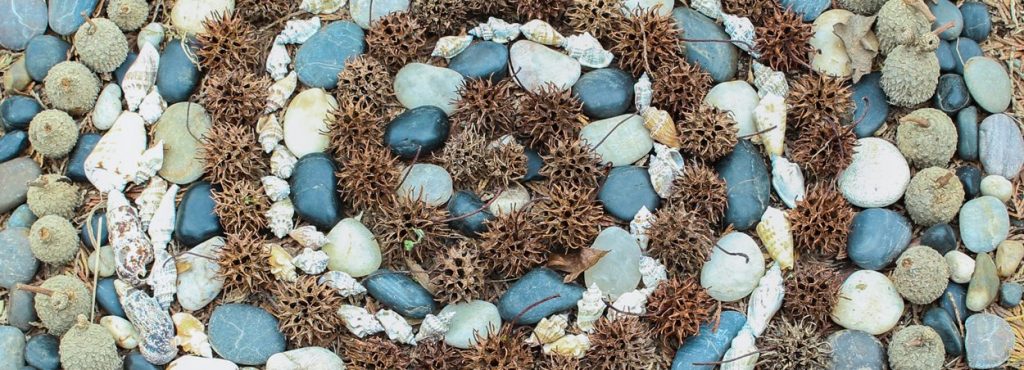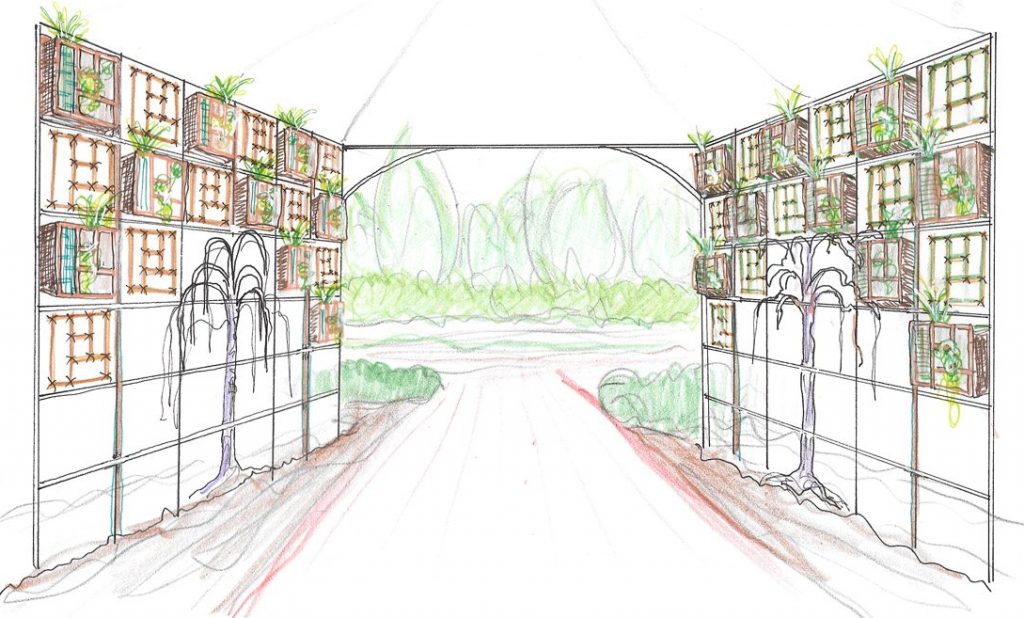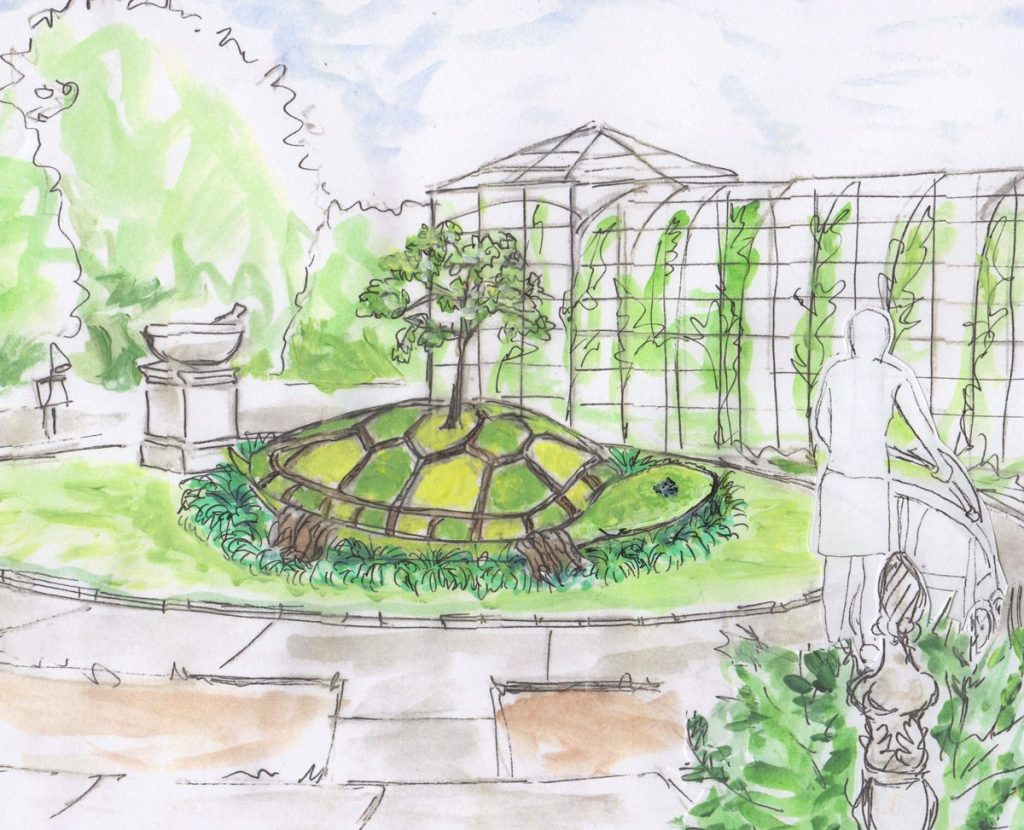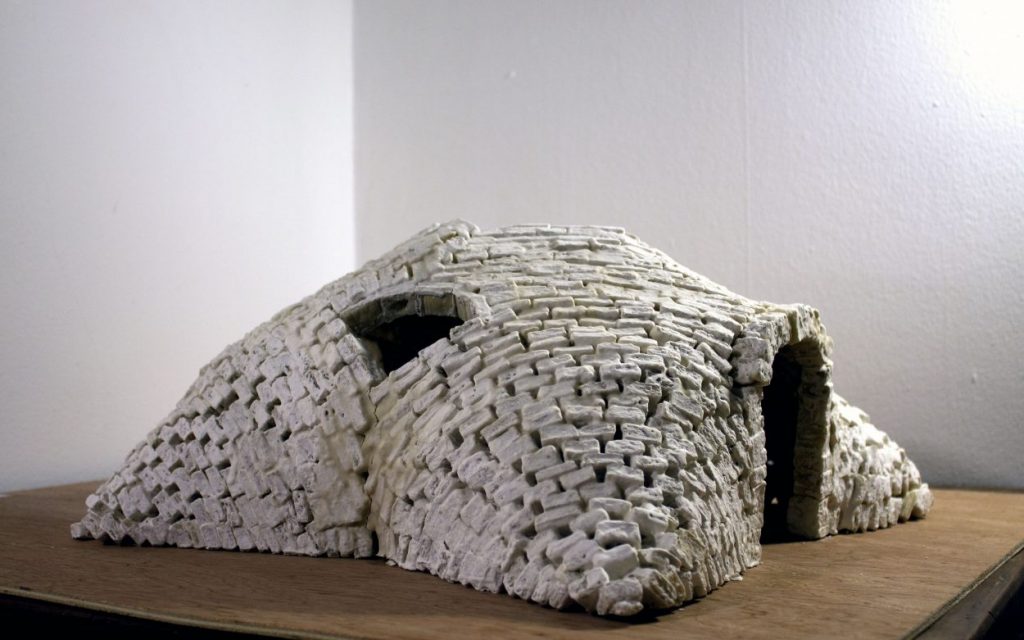The Wild Art We are Wild About
Picture a blazing sunset, moody dark gray clouds juxtaposed against bright green trees, or a tiny wildflower peeking out from between the cracks in a sidewalk – wouldn’t you agree that wild art is all around us? This season we are celebrating art in the natural world, in all of its forms, and we’re inviting artists (and also our Garden guests!) to join in the festivities.
Wild Art: A Journey Off-Canvas, opening May 26th, features regional artists and art-based non-profits who will use nature as their medium to create large-scale installations, immersing guests in the beauty and wonder of the natural world. Throughout the season, pop-up events will add another layer of ephemeral art to the landscape and we hope that Garden guests will spend time at our Creation Stations, leaving their own creative mark on the landscape.
The seven regional artists, introduced below, were chosen from a pool of applicants from Charlottesville, Fredericksburg, Norfolk, Richmond, and Virginia Beach by a jury panel consisting of representatives from the City of Richmond Public Art Commission as well as Garden staff and volunteers. Through their artwork, these talented artists reveal their passion for sustainability, creative problem solving, environmental stewardship, multi-sensory experiences, storytelling, culture, and public engagement. We can’t wait to see their visions come to life mid-May, when installation begins!
But for now, we want to introduce you to the artists, and introduce you to the art, and take it to a level deeper, behind the scenes. We asked the artists what we really wanted to know about the process, ideas and thoughts behind their sculptures and installations. Here are their answers:
Jeffrey Hall
Hidden Community, Tree House, and Code Playground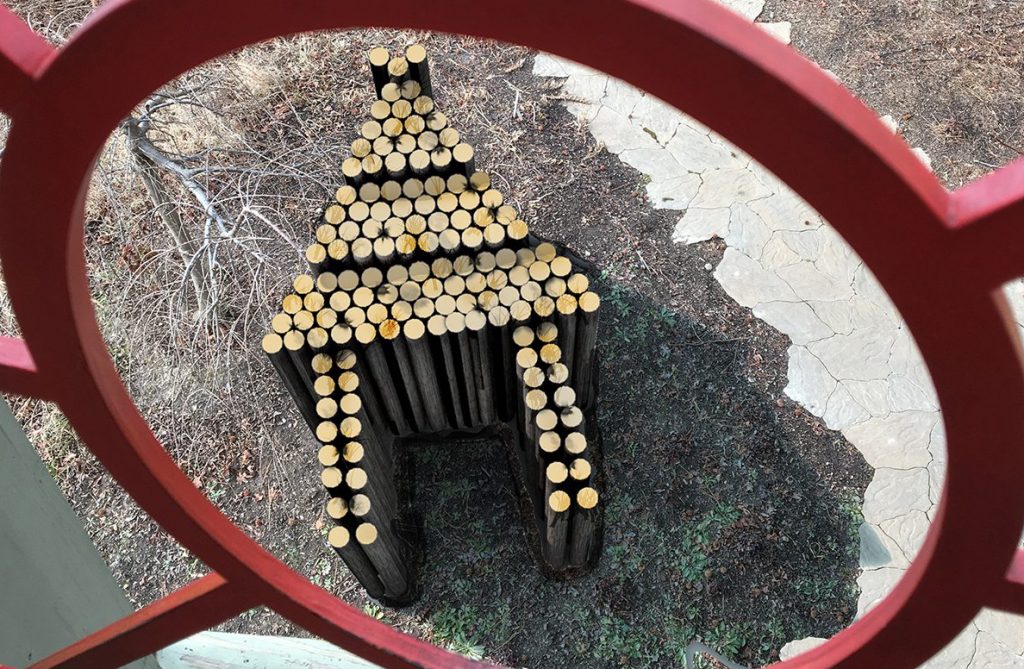
Q: You have three installations, connected together through a series of riddles. What is your goal?
A: The goal is to create an engaging, interactive art-based scavenger hunt that focuses on uncovering the Garden’s history and its natural diversity. By having visitors actively participate in solving puzzles, it underscores the need for deep thinking and problem solving to unlock the environmental challenges we face.
Q: While developing these pieces, did you uncover anything surprising in the Garden’s history?
A: In doing research to design the puzzles, I uncovered the wonderful story of Grace Arents. It is such an astonishing history! She became the lens through which I interpreted this challenge.
Q: How will Garden guests be able to participate in the scavenger hunt?
A: Read the interpretive signage! The signs at Hidden Bee, Tree House, and Code Playground will include a web address so guests can access the scavenger hunt online.
Q: Do you have any hints for solving the riddles?
A: Remember to look at the art from many different perspectives! And when you solve the riddles, keep the solutions a secret so others can enjoy the sense of discovery about the Garden – its history, diversity, and natural beauty.
Cathy Vaughn: Arbor Quilt and A Butterfly’s Journey
Q: Arbor Quilt is a vertical planting display. What do you hope to accomplish with this piece?
A: My primary goal is to demonstrate to people who may not have a large space for gardening a way to bring nature into a small space by using a dimensional planter box; using a “box” to help people “think outside the box.”
Q: Why were you inspired by quilts?
A: The Log Cabin quilt pattern is a rich part of American history. Although no one is sure exactly when and where the log cabin originated, the pattern has been documented in quilts as early as the 1820s. Its strong geometry, historical significance, and ease of repetition make it a natural pattern for a vertical garden display.
Q: How did you decide what to plant in the quilt squares?
A: Seasonal plantings will add color and whimsy as the “quilt” grows over the duration of the exhibit.
A Butterfly’s Journey
Q: How would you describe your sculpture?
A: Inspired by the modern labyrinth movement, A Butterfly’s Journey is an interactive installation that invites meditative and reflective experiences as visitors move within its walls.
Q: Why did you decide on a butterfly as your inspiration?
A: Beyond the obvious tie-in with the Butterflies LIVE! exhibition in the Conservatory, the butterfly is a rich symbol of change, diversity, and interdependence. The transformation of a caterpillar into a butterfly is inspiring, allowing us to imagine a path for our own transformation.
Q: Why did you incorporate a walking meditation?
A: Meditation offers us an opportunity to slow down and reflect on our relationship with the earth, our community, each other, and ourselves. When we heal and develop ourselves as individuals, we deepen our ability to be alert and responsive to the needs of the world.
Q: Why do you consider your sculpture to be “wild art”?
A: This piece is “wild art” because the plant is transformed – reconfigured, but not tame or edited too much to allow the freedom and expression of the limbs.
John M. Holland: The Music House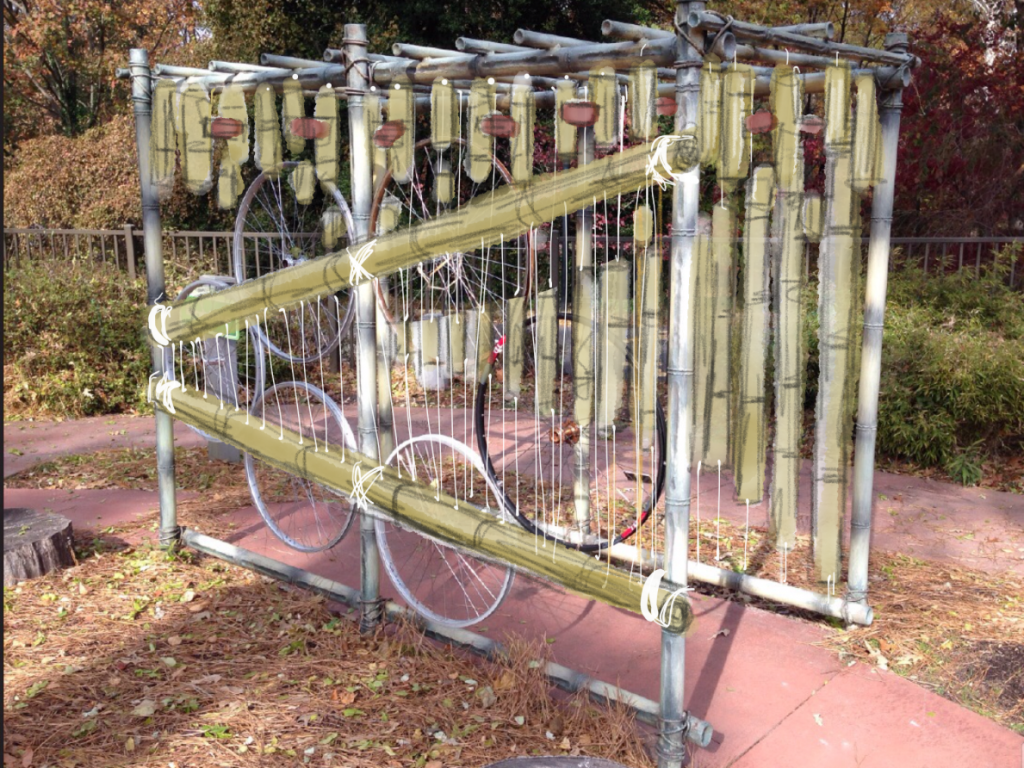
Q: How does your background as both an artist and educator inform your art?
A: As an artist I investigate the intimate relationship between man-made structures, the audience, and the natural environment. As an early childhood educator, my attention has focused on the experiences of children as they interact with their environment. I have studied children’s fascination with things that grow, their inclination to turn anything and everything into instruments, and their desire to test the resistance of the world through their insistence on manipulating it.
Q: What natural material will you use to create the sculpture?
A: The primary medium will be a material sometimes viewed as a nuisance in the local ecology – bamboo. Although considered a non-native invasive species, bamboo has a number of qualities that make it unique and valuable as a material for musical instruments. Its hollow chambers serve to make it lightweight and its chambered growth pattern creates natural resonators for percussion instruments. The Music House is designed so that Garden guests can explore how the length and thickness of bamboo affects sound production.
Q: How will guests be able to create music at your sound sculpture?
A: The Music House will be interactive in a variety of ways. It will harness wind to move chimes that make noise. Mallets will be provided for striking parts of the sculpture for use as a percussion instrument. Finally, piano strings will provide a melodic feature that can be played by plucking with fingers. I imagine children exploring the rising and falling sounds by running through the center of the sculpture and using mallets or sticks to strike each of the vertical elements.
Colleen Hall: Turtle Island
Q: What is your approach to creating art?
A: Nature, storytelling, and education have been my artistic focus throughout my 22 year career as a professional artist. The dynamic and diverse beauty and wonder of the natural world offers me an unending source of inspiration. I gather images, ideas, inspiration, and information, often from and about nature. I seek to share that learning, often about our human interdependence with nature, by telling a visual story through my artwork.
Q: Why did you decide to create a living sculpture of a turtle?
A: Powerful, patient, and wise, turtles have a mythical significance around the world, and across diverse cultures. For example, Hindu mythology holds that the world rests on the back of four elephants who stand on a turtle’s shell. Meanwhile, the Iroquois believe that the great tree of peace grows out of the back of a turtle. Today, the turtle has also come to symbolize the environmental movement.
Q: What plants will you feature in the installation?
A: The turtle’s shell will be made up of a pleasing array of drought tolerant sedums and ground cover in differing shades of green.
Leila Ehtesham: Gonbad
Q: What is your installation made out of?
A: I am primarily using dried grasses from the Garden, which are boiled down, mechanically pulped, mixed with recycled paper to improve cohesion, and then compressed into 8”x 8”x 3” bricks using a homemade press and mold. Building with pulped plant fibers, in other words paper, is not original to me or even to humans. Some believe that the Ancient Chinese first got the idea for paper from observing a colony of wasps build their nest.
Q: Why did you decide to create a structure?
A: Shelter is fundamental to all creatures, and so structures are fundamental to the history of humankind. Our structures have evolved from creations of purely practical need into increasingly grandiose assertions of religion, culture, personality and superiority. My interest is in connecting back to the basics, in understanding what it meant and still means to build with and for a community.
Q: What inspired you to work in natural materials?
A: Based on my experiences growing up in the rapidly modernizing city of Dubai, where once undisturbed natural landscape became scarred by human industry, my goal is to create work in the most responsible way I can. This means working with materials that can be gathered and processed by my own hand. With minimally processed materials, it is clear that the structure was built from plant fibers, and that those fibers will eventually break down and return to the earth.
Q: Where did you draw inspiration for the shape of the structure?
A: The form is stylistically based on the domed roofs typical of traditional Middle Eastern architecture. Rather than a traditional dome, squinches at the corners create undulating courses, which give the structure a more organic shape. Windows, doorways, and an opening at the top of the dome allow natural light to enter.
Q: Where did the name of your piece come from?
A: Gonbad is the Persian word for a dome.
Susann Whittier: Walking Sticks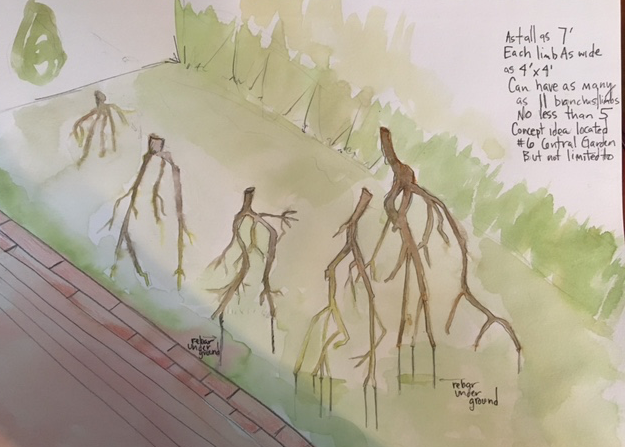
Q: Where did the inspiration for Walking Sticks come from?
A: Over the summer of 2016 I pruned five Ligustrum shrubs from the front of my property. Using a Sawzall to prune, I cut at the very bottom of the shrub leaving me with a substantial amount of limbs to create a sculptures. Flipping the trunk up and allowing the branches to support, I created these walking pieces. As I continued to repeat the process they became a herd of sticks walking across the sidewalk.
Q: How did your neighbors respond to the herd of walking sticks?
A: People walking by were asking questions and it sparked conversations about how these walking sticks brought a whole new meaning to how we interact with plants. They discussed how I was giving something that most people discard a new life. People were full of excitement that it was happening right on the sidewalk and that they were able to interact.
